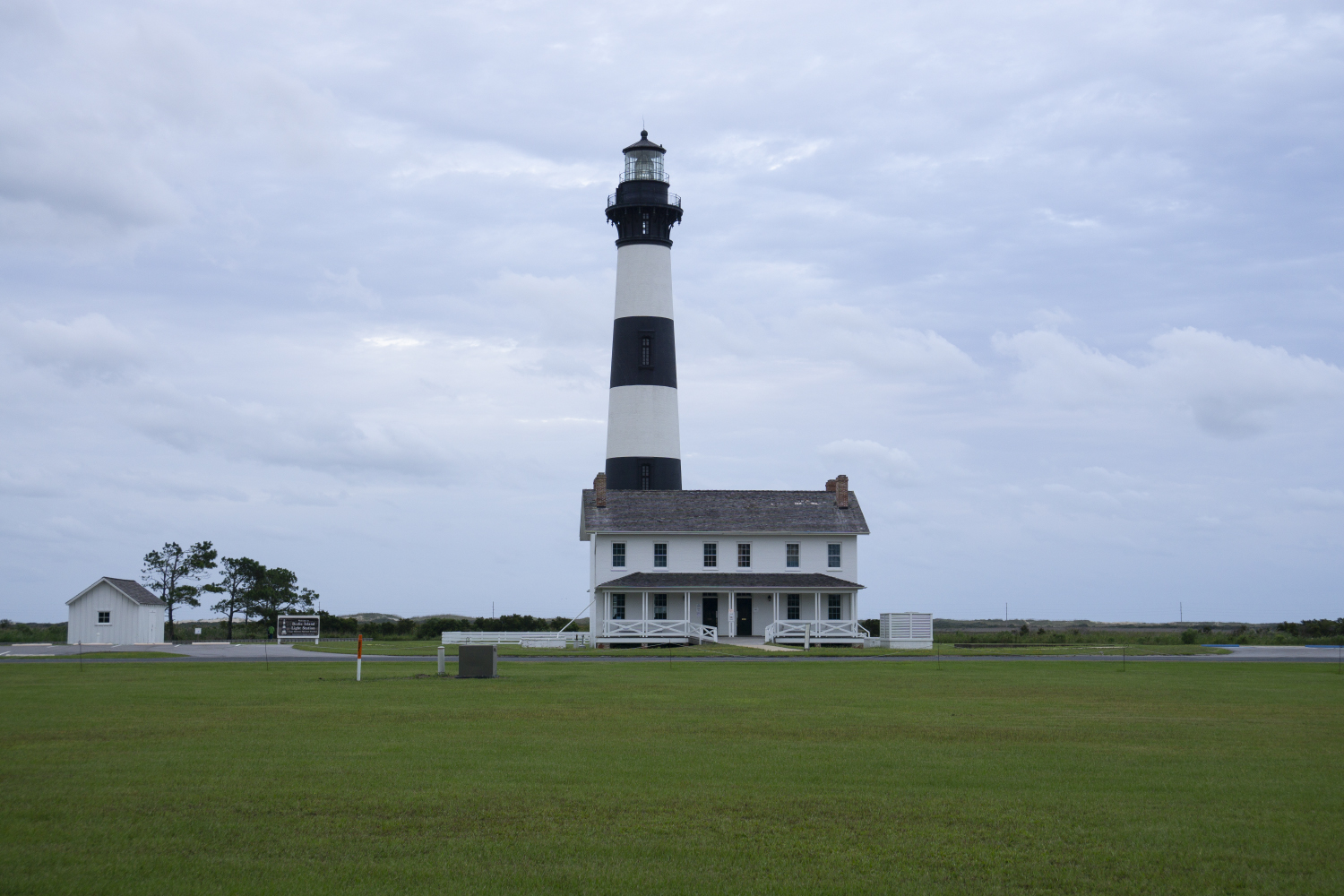History isn’t something I associate with going to the beach, but last month I discovered the Outer Banks are more than just sand and surf. There’s a ton of interesting historical events that have happened at the Outer Banks, which are long, skinny islands along the coast of North Carolina.
“Let’s go to the Graveyard of the Atlantic Museum,” suggested Melissa as we huddled over Google Maps, plotting our course several weeks before the trip. Zoomed out on my computer screen, the maritime and shipwreck museum was near the impossibly small-looking southern tip of one of the islands.
“Yes, let’s definitely go to the Graveyard of the Atlantic Museum,” I said. “Just getting there might be an adventure.”
Several weeks later, we sat on a bridge on our way to the museum, stuck in the first traffic jam we’d had the entire trip. To our left was the Atlantic, and on the right were cranes mounted on ships docked in the sound.
Traffic jams at beaches are normal, but this was off-season, after waiting for an hour, we were getting really puzzled. We got out of the car several times but couldn’t see what was causing the jam.
“Hey, there’s a guy walking,” said Melissa, “I’ll ask him.”
“Sand,” the man explained. “High tide washed a lot of sand over the road. They’ll have it cleared soon.”
He was right. Minutes later, we started driving again. We saw the sand-moving equipment and drove through seawater covering the road.

At the Graveyard of the Atlantic Museum, we studied displays about seafaring, shipwrecks, and diving. There was a map of all the shipwrecks located around the Outer Banks (a lot) and information about the role the islands played in WWII.
After touring the museum, which was a low-key, pay-by-donation, type of museum, we walked along the beach, along the ocean where so many shipwrecks have happened and where U-boats once preyed not too many miles from shore. Strong winds blew sand in our faces and fishermen were the only other people out on the beach. We got back in the car and drove to two lighthouses.


We stayed at an AirBnb on a horse farm on Roanoke Island. When I was in about fifth grade, I was fascinated with unsolved mysteries, including the Lost Colony of Roanoke Island.
The Lost Colony was the first English settlement in America, with 115 people arriving in 1587. The governor of the colony decided to sail back to England for supplies. Because of a war, he wasn’t able to return until three years later. But when he returned, every single person in the colony, including his own grandchild (the first English child born in the New World), had vanished.
Today Roanoke Island looks just like all the rest of the Outer Banks. There’s no museums or memorials marking the spot where the Lost Colony once stood. But the bridge leading from the mainland to the island is named for Virginia Dare, the baby girl who disappeared four hundred years ago.
Happier history awaited us at Kitty Hawk, the place of the first flight! At first, Melissa and I weren’t sure if we wanted to shell out the ten bucks for an aircraft museum and memorial, but we were glad we did.
Even though I’m not at all mechanically inclined, I really enjoyed the exhibits explaining how Orville and Wilbur Wright, who owned a bicycle shop in Ohio, crafted first gliders, then an engine-driven airplane, using the the powers of aerodynamics. The first successful flight (with an engine) was in 1903.
The Wright brothers chose the Outer Banks because of high winds and sand for soft landings.

The locals on the OBX helped out the Wright brothers with their extraordinary project. One woman let them use her sewing machine to sew the material for the wings. She used the scraps to sew dresses for her daughter and her sewing machine is in the museum today.
After visiting the museum, we walked out to the field where memorial stones mark where the first, second, third, and fourth airplane flights took off and landed. The first flight lasted 12 seconds and went 120 feet.

After Kitty Hawk, our last tourist stop was the town of Duck, which is the home of… Duck Donuts. Less important than airplanes, of course, but still delicious! Actually, I didn’t really know much about Duck Donuts before this trip, but Melissa was very excited about them and now I think they’re pretty cool, too. They fry the donuts right in front of you.
The best vacations are the ones that you learn the most.



Very cool ! I love the light house pictures .😎
Thanks! I thought it was cool how they were both black and white, but the one had twisted stripes.
I really like that picture of the tree on the sound!
There was a long boardwalk along the sound, which is where I took the photo.
Great post. I’ve always liked reading about the Wright Brothers.
Since being at Kitty Hawk, I read this quote from one of Wright brothers’ letters (concerning how he wished he could be spending time on inventions instead of patent issues) “It’s always easier to deal with things than people.”